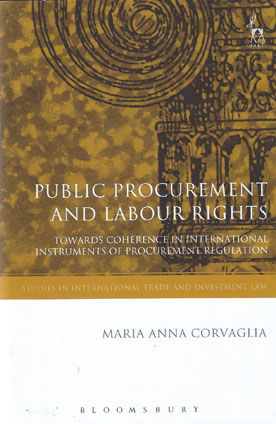
This book examines the complex issue of whether there can be an international architecture for public procurement, through the prism of labour law and policy.
In particular it is concerned with the fragmentation of the international framework of procurement law into regulatory models that develop independently and that follow different mechanisms for the inclusion of labour policy and labour law.
The work offers an innovative comparative approach, discussing the ways in which the different international regulatory models are able to implement (aspects of) labour rights with the available procurement instruments. Scholarly, rigorous and timely, this will be important reading for all international trade lawyers.